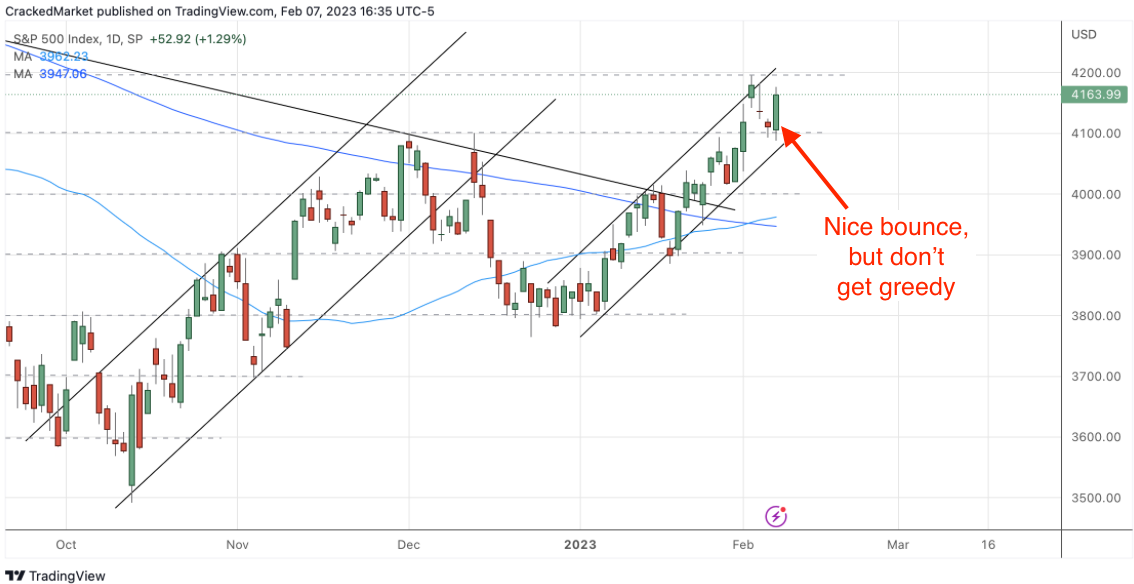Tuesday was a whipsaw session for the S&P 500, but by the time dust settled, the index powered 1.3% higher, ending a two-day losing streak.
The day’s big headline was public comments from Jerome Powell covering the economy, recent job gains, and future rate hikes. But for all the hype and anticipation, he didn’t say anything new or unexpected.
That didn’t stop impulsive day traders from lurching from one side of the boat to the other. But at the end of the day, what Powell said changed very few minds, and that’s why these lurches didn’t accelerate in either direction.
More important is the 4,100 support held for the second day, giving us the buying opportunity we were looking for. As I wrote Monday evening:
Big picture wise, there isn’t any meat to Friday’s headlines or this latest wave of selling. This is nothing more than a routine step back and consolidation near overhead resistance. Those dips are shallow and bounce quickly. Wait a few hours too long and you will miss the next buying opportunity.
Well, here we are a few hours later, and the index now finds itself closer to 4,200 than 4,100. If you didn’t come to Tuesday’s session with a plan to buy, you missed some really easy money.

As for what comes next, the most important thing to realize is this market doesn’t have big move potential. We get these tradable daily swings, and there is more up than down, but every step forward is followed by a step back.
That means we want to take profits early and often. Hold a few hours too long, and the market will steal those profits back.
I like Tuesday’s gains and sitting on a pile of profits, but this is the wrong time to be greedy. I already lifted my stops and am planning my exit.
As easy as it is to buy back in, it makes sense to start taking partial profits as we approach 4,200 resistance. This market doesn’t have big move potential, so we don’t need to worry about getting left behind by a big breakout.
Instead, we should be more worried about our profits escaping during the next step back. Buy the bounce, sell the breakdown, and repeat as often as the market lets us. That’s the way smart money is playing this.
